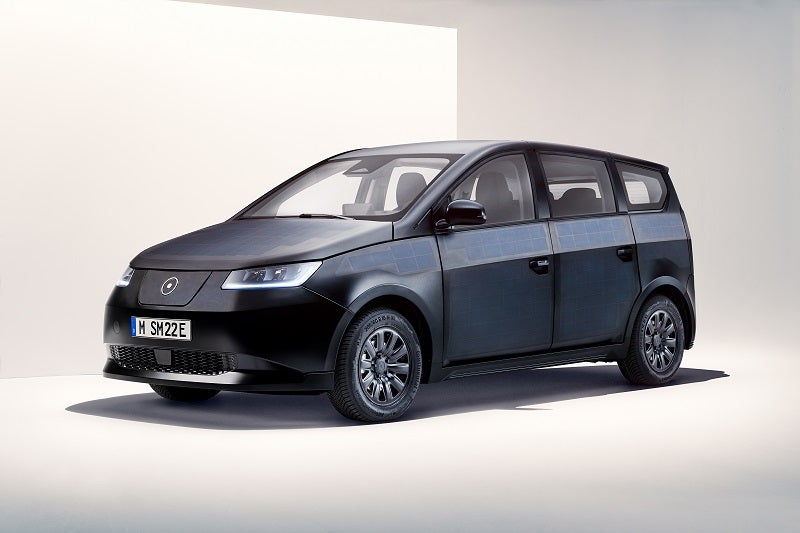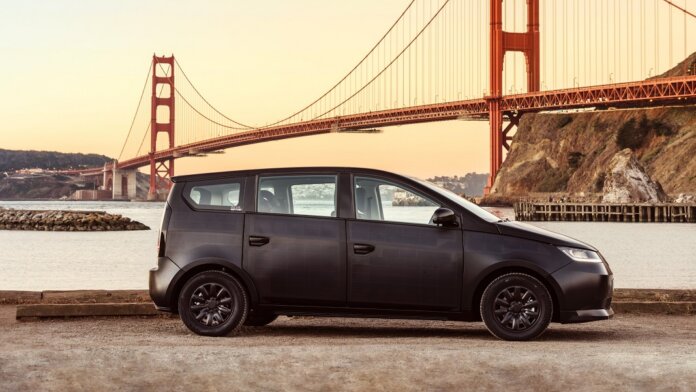The push to retire combustion engine cars and transition to electric vehicles is intensifying, even as energy prices rise and electrical grids get stretched thin. Cutting out the middle man with cars that can convert sunlight to horsepower all on their own could help. A new one is coming to market next year—German company Sono Motors finished a US tour of its Sion solar car last month, and intends to deliver the first vehicles to European customers by late 2023.
It’s pretty self-explanatory from the name, but as a quick refresher, solar cars have a battery pack that can be plugged in to charge just like any other electric car, but they also have solar arrays on their roof and hood that give the battery an extra bit of juice.
How much juice are we talking? It varies; both California-based Aptera Motors and Dutch startup Lightyear say their debut solar cars—called the Aptera and the Lightyear 0, respectively—can power themselves for up to 40 miles a day in optimal sun conditions. The Sion’s specs say it can get 112 to 245 kilometers (65 to 152 miles) of range from solar energy per week in “ideal conditions”; that comes out to 10 to 20 miles per day, which is near negligible if you’re trying to use the car for anything other than city errands.

The Sion gets less juice from the sun because it uses a slightly different technology than its competitors. Rather than the usual solar panels made of glass, its solar array is polymer-based and integrated into its body panels. This carries the advantages of lower costs and less weight, at the expense of variety and style. As CEO Laurin Hahn put it, “This car comes in any color you like as long as it’s black. So basically there’s no options. That’s massive in saving costs.”
The car doesn’t need a paint job, she added, because it has solar panels on the outside; this along with an aluminum space frame and the contract manufacturing and online direct sales models the company is using all help drive down the Sion’s cost.
A Finnish company called Valmet Automotive will be producing the Sion. The car’s lithium iron phosphate battery has a 190-mile range, with 465 solar half-cells integrated on its roof, doors, fenders, and hood. Its maximum speed is 87 miles/140 kilometers per hour.
The vehicle also has bidirectional charging—you can plug it into an outlet from your house to fill up its battery, or if its battery is full and you need to power your house or another car, there’s a plug for that too. It could even put energy back into the grid, though only up to 11 kilowatts.
One drawback, if you care about this sort of thing, is that the Sion won’t be winning any beauty contests (at least not if I’m the judge). While the Lightyear 0 looks like a normal sedan and the Aptera resembles an aerodynamic flattened egg on three wheels, the Sion can be described as a clunky matte black box containing five seats and a hatchback.
What it lacks in aesthetic appeal, it will hopefully make up for in practicality. Whoopie Goldberg, for one, gave it an enthusiastic endorsement: “This car would be great if you have a family,” she told a TechCrunch reporter. “This can replace the mini van. You can go shopping in it. You can feel comfortable parking it.”
Solar technology aside, the Sion’s $25,000 price tag makes it one of the cheapest electric vehicles on the market (well, not as cheap as the tiny $6,800 Squad solar car, but that’s more like a golf cart).
As of last week, Sono said it had received more than 20,000 reservations from individuals and more than 22,000 business pre-orders. The company is aiming to produce 257,000 Sions over a seven-year period.
A world where cars run on sunshine sounds terribly pleasant. It will be a while before we get there, if ever, but cars like the Sion are a start.
Image Credit: Sono Motors



